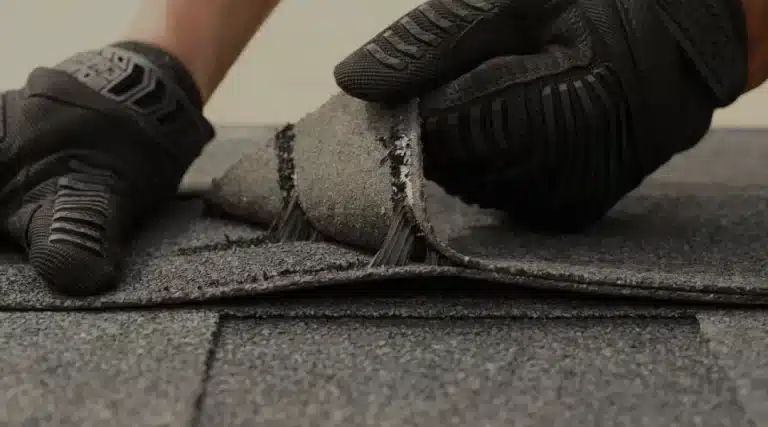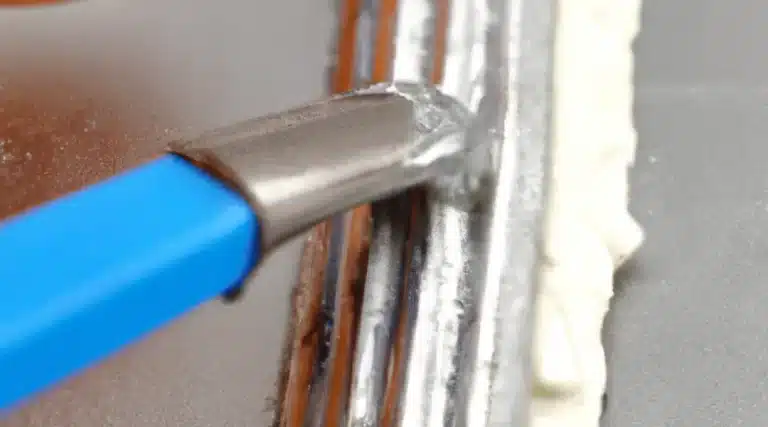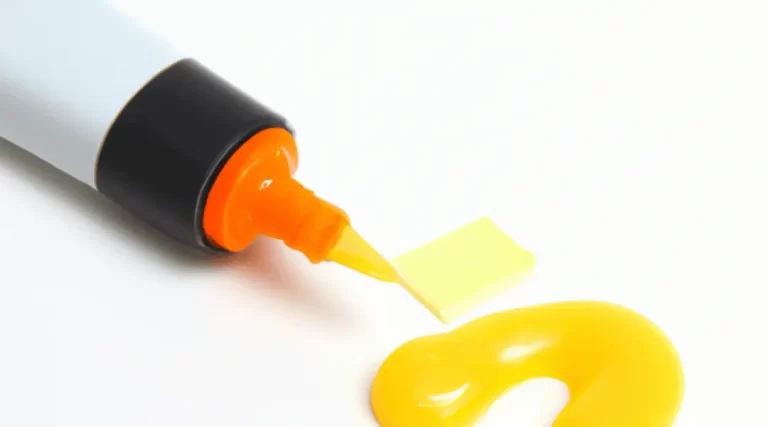Acrylic adhesive is a versatile, solvent-based adhesive that has been widely used in various industries for its exceptional bonding properties. This adhesive is made of a synthetic polymer that provides a strong, permanent bond to a variety of surfaces, including metal, plastic, wood, and glass. As a result, it has become a popular choice for many manufacturing and construction applications.
Like any other adhesive, acrylic adhesive has its pros and cons. It offers a range of advantages, such as excellent adhesion to different materials, high resistance to weather and chemicals, and good UV stability. However, it also has some drawbacks, such as low impact resistance and limited flexibility.
Therefore, it is important to understand the properties and applications of acrylic adhesive before choosing it for your project. In this article, we will explore what acrylic adhesive is, its uses, and the pros and cons of using it.
Understanding Acrylic Adhesive
The knowledge and comprehension of the chemical properties and behavior of acrylic-based chemical bonding agents offer a deeper understanding of their application and potential benefits in various industrial and commercial settings, providing a sense of confidence and reliability in their efficacy.
Acrylic adhesive composition typically consists of polymers, which are chains of molecules that bond to surfaces by means of chemical reactions.
The bonding process involves the formation of covalent bonds, which are strong and durable.
This type of adhesive is widely used in various industries, such as construction, automotive, and electronics, due to its excellent bonding properties, resistance to heat and chemicals, and ability to maintain its strength over time.
Industrial applications of acrylic adhesive include bonding of metals, plastics, composites, and ceramics, among other materials.
The versatility of acrylic adhesive makes it a popular choice for many industrial and commercial applications, providing a reliable and cost-effective solution for bonding and joining different materials.
Industrial Applications
Industrial applications of this highly versatile material have made it an essential component in many manufacturing processes. Acrylic adhesive is widely used in industrial bonding due to its exceptional adhesive properties, which allow it to bond a wide range of surfaces, including metal, plastic, wood, and glass. Its quick bonding and drying time make it a popular choice for assembly line production, where time is of the essence.
Additionally, acrylic adhesive is resistant to heat and chemicals, making it suitable for use in harsh environments. It also has a lower VOC content compared to other adhesives, making it an environmentally friendly option. Overall, its reliability and versatility have made it a go-to adhesive for various industrial applications.
Moving forward, let us explore the pros of acrylic adhesive.
Pros of Acrylic Adhesive
Acclaimed for its exceptional bonding properties, versatility, and resistance to heat and chemicals, acrylic adhesive has proven to be a reliable and environmentally-friendly choice for various industrial applications.
One of the biggest benefits of using acrylic adhesive is its ability to bond with a wide range of surfaces, including metal, plastic, and glass. It also has a fast cure time and can withstand high temperatures and harsh chemicals without deteriorating.
Additionally, acrylic adhesive is a great choice for outdoor applications as it can resist weathering and UV rays. Furthermore, it is a non-toxic adhesive, making it safe to use in various applications.
All these advantages make acrylic adhesive a preferred choice for several industries, including automotive, construction, and electronics. However, while acrylic adhesive has many benefits, it also has some drawbacks that need to be considered.
Cons of Acrylic Adhesive
On the flip side, it is important to note that like any other material, acrylic adhesive has its limitations, and understanding its downsides is crucial for making informed decisions when selecting a suitable adhesive for industrial applications.
One of the main disadvantages of acrylic adhesive is its weak bonding strength in high-temperature environments. This means that it may not be the best option for applications where the adhesive will be exposed to extreme heat, such as in automotive or aerospace industries.
Additionally, some types of acrylic adhesives can be brittle and prone to cracking, which can compromise the integrity of the bond. Furthermore, acrylic adhesives may not be ideal for bonding materials that are oily or greasy since they may not adhere properly.
Despite these drawbacks, acrylic adhesives are still widely used in various industries due to their excellent resistance to weathering, UV light, and chemicals. With this in mind, it is important to weigh the pros and cons before selecting an acrylic adhesive for any given application.
In the next section, we will explore the benefits and drawbacks of DIY applications of acrylic adhesive.
DIY Applications
Exploring the potential of utilizing do-it-yourself (DIY) applications with a particular focus on the practicality and effectiveness of acrylic adhesive presents a nuanced and insightful examination of the possibilities of this versatile material.
For those interested in tackling home repairs or DIY projects, acrylic adhesive can be an excellent choice due to its strong bonding capabilities and versatility. Here are four DIY applications that can benefit from acrylic adhesive:
1) bonding plastic or metal to other surfaces,
2) repairing broken ceramics or glass,
3) installing lightweight fixtures or decorations, and
4) sealing gaps or cracks in walls or windows.
Additionally, acrylic adhesive dries quickly and is resistant to water damage, making it a reliable choice for outdoor projects or areas that are exposed to moisture.
However, while acrylic adhesive can be a helpful tool for DIY enthusiasts, it is essential to consider safety measures to avoid any potential hazards. With that said, let’s dive into the next section on safety considerations.
Safety Considerations
When working with acrylic adhesive, it is important to consider safety precautions to ensure a safe and efficient application process.
Firstly, it is recommended to use the adhesive in a well-ventilated area to avoid inhaling fumes that can be harmful to health.
Secondly, proper handling techniques should be observed, such as wearing gloves and protective gear to avoid skin contact and eye irritation.
Lastly, the adhesive should be stored properly in a cool, dry place, away from direct sunlight and sources of heat to maintain its quality and prevent accidents.
Use in Well-Ventilated Areas
Ventilation is crucial when working with acrylic adhesive, as studies have shown that the inhalation of the fumes can cause respiratory issues in individuals who work with it regularly. Proper ventilation helps to reduce the concentration of fumes in the air, which makes it safer for individuals to work with the material.
In addition to the benefits of ventilation, individuals who are allergic to certain chemicals should take additional precautions when working with acrylic adhesive. This includes wearing protective gear, such as gloves and masks, to prevent exposure to the skin and respiratory system.
It is important to note that while ventilation and precautions for allergies are important, they do not replace proper handling and storage of the material. The next section will discuss the necessary steps for handling and storing acrylic adhesive safely.
Proper Handling and Storage
To ensure safety and avoid potential hazards, it is important to handle and store acrylic adhesive properly. Handling precautions include wearing protective gloves and goggles, using the adhesive in well-ventilated areas, and avoiding skin contact.
Additionally, temperature control is important as the adhesive may lose its effectiveness if exposed to extreme heat or cold. Proper storage is also crucial, as the shelf life of the adhesive may be affected by exposure to air, moisture, or sunlight.
Spill cleanup should be done immediately with appropriate methods and disposal methods must comply with local regulations. Packaging options and transportation regulations should also be considered when handling and storing acrylic adhesive.
Material compatibility is also important as certain materials may react with the adhesive. By following these guidelines, one can ensure that they are using acrylic adhesive safely and effectively.
In the next section, we will explore whether acrylic adhesive is the right choice for your project.
Conclusion: Is Acrylic Adhesive Right for Your Project?
In conclusion, the suitability of acrylic adhesive for a given project should be determined based on careful consideration of the project requirements and adhesive properties.
While acrylic adhesive offers many benefits such as durability, resistance to temperature and weathering, and strong bonding properties, it may not be the best option for every project.
It is important to weigh the pros and cons of using acrylic adhesive and consider alternative options before making a decision.
Factors such as surface preparation, curing time, and cost should also be taken into account.
Ultimately, it is important to choose an adhesive that will provide the best performance and longevity for the specific project at hand.
Conclusion
Acrylic adhesive is a popular type of adhesive that is widely used in various industrial and DIY applications. It is a versatile adhesive that offers several benefits such as high strength, durability, and resistance to temperature, chemicals, and UV radiation. Acrylic adhesive is commonly used in industries such as automotive, construction, electronics, and packaging, among others.
Although acrylic adhesive offers several advantages, it also has some drawbacks. Its high initial cost, difficulty in removing, and potential health hazards are some of the cons of using acrylic adhesive. Therefore, safety precautions such as using protective gear and proper ventilation are recommended.
In conclusion, acrylic adhesive is a reliable adhesive that is suitable for different applications. Its benefits outweigh its drawbacks, making it a preferred choice for many industries. However, it is important to follow safety guidelines when using acrylic adhesive to avoid any potential hazards.
So, whether you are working on an industrial or DIY project, consider using acrylic adhesive for its strength, durability, and versatility. After all, ‘A stitch in time saves nine’ and using the right adhesive can save you time and money in the long run.






